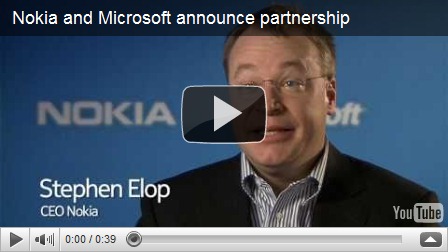There's no doubt that social networking sites such as Facebook are fun, but do you exercise caution before you post? More than likely you don't. However, you could be damaging your career and your online reputation when you post risqué content.

Here are 13 ways you can improve your online reputation (if it needs it of course).
1. Double-check privacy settings
A lot of people compartmentalise - using LinkedIn as their professional network for colleagues and clients and Facebook as their network for family and friends, said Richard Binhammer, responsible for conversations, communities and communications at Dell.
"That's fine, you can compartmentalise that way, but the fact is both of them are searchable, so if an employer wants to go to Facebook and search you and find those things, well they can unless you've protected them from being found," he said.
2. Don't neglect your social network accounts
Letting an account go stale is a big concern, said Paolo Pasquini, spokesperson for consumer and online at Microsoft.
"What happens when you join the LinkedIn community and then you neglect it because you're busy with your Facebook pages or your blog site...your LinkedIn [shows] two companies ago where you used to work and it may have a contact or profile or personal information that's no longer relevant," he said.
If you have several accounts, Pasquini suggested using an aggregator that makes it easier to create content once and publish in multiple places. For example, Windows Live recently announced a partnership with Facebook and already maintains partnerships with LinkedIn and Twitter," he said.
3. Maintain a consistent personal brand
"When you realise that you can't control all your personal information... you embrace the ability to surrender some of that privacy so you can have this proactive brand online. I like to tell people to think of it as your personal corporate logo. When people think of me, what do I want them to get? That should be consistent across all the places where you are actively socialising," said Pasquini.
4. Honour transparency
"Some folks at Dell are active on social media sites... they are much more comfortable saying, 'I am always going to be a Dell employee'. Every time I speak or say anything at all, it's always going to be me as a Dell employee," said Lionel Menchaca, chief blogger at Dell.
"I'm part of that other crowd, where there's a value of having both a balance between my personal interests and being a representative of Dell... the only rule we've got is you need to be transparent in that if you're talking about an industry issue or providing a Dell perspective, you're making it clear that you are an employee of the company," he said.
5. A personal website acts as your home base
"People say websites are old hat, but at the end of the day, even if you go on Twitter, you still have to have somewhere to send somebody. I think a website is still good for that," said John Carson, social media consultant at Echo Communications.
Websites are also a good starting point for someone to find you, Carson continued, which can be as simple as an online resume that tells who you are and where you've worked.
6. Optimise search results with a blog
"It's not that hard to manipulate results in search engines to skew them in your favour, if you know how to do it properly," said Carson. Get your own domain name, start a blog, put tags in there, get testimonials from people, ask them to link back to you, and if you want to really expand - post guest articles from top influencers in your field, he suggested.
If you have a blog, it should contain your full bio page, resume, all your recommendations and testimonials and anything else you can think of, suggested Michael O'Connor Clarke, vice-president at Thornley Fallis Communications.
"Even if you're fully and happily and comfortably employed and been in the same job for 20 years, who knows what could happen in this market? Update it now," he said.
7. Gather testimonials & recommendations
Hiring managers who dig behind the search results will try to speak to former colleagues, Carson pointed out. "If you're a hiring manager, you have to look at that person as a brand and see what people are saying about them, if they've recommended them for work, if they've got testimonials. You have to do your homework," he said.
Ask people to write a little one paragraph reference or just a little testimonial, suggested Clarke, who did so for his own blog. "They're still up there as a way of proactively marketing myself...that's something anybody can do. We've all got people in our network," he said.
8. Participate in online communities
"You don't have to have a blog, but you should certainly be out there engaging in the social media world," said Clarke. "If you see stuff that is genuinely of interest to you or stuff you're knowledgeable about, well why aren't you commenting on those things? What aren't you building something of a footprint, a trail that demonstrates your experience and expertise?"
"It's one thing to RSS a bunch of people and read blogs and stay current, but a very powerful thing that a lot people don't take advantage of is getting engaged and getting into the community and talking within the community. That's another way to mange that brand," added Pasquini.
9. When in doubt, back off
"It's harder to erase bad information once it's out there, rather than get good information out there in the first place," advised Carson. "If you're unsure about that, it's best not to go out there too much because there have been so many case studies where people have said the wrong thing or an employee sent an email to the wrong person."
10. Your Facebook account is important
Adopting the 'If I don't do it, it won't touch me' attitude is one of the worst things you can do, according to Pasquini. "If you're not actively managing and proactively managing your brand online, then you're doing yourself a disservice and potentially others are doing it for you and that might not be what you want either," he said.
For example, if you don't have a Facebook account, you run the risk of others tagging photos of you that you don't like or don't want to be associated with, he said - such as photos of you at the Christmas party of a competitor to the company you now work at.
11. Keep active and current
Be proactive and create that positive online brand, because if you're not, someone else is, warned Pasquini. "This activity is very high within the IT workforce, because these are the people driving a lot of this innovation, so it's important to stay active and current."
12. Monitoring is the least you can do
"On the web, things happen so fast now. You could be a hero on the Friday and by Monday your name could be mud. You have to be very careful about how fast information can move on the Internet and keep a check," said Carson.
Google yourself regularly and if you find something you wouldn't want a hiring manager to see, ask the source to remove that information, suggested recruitment agency Robert Half.
The IT staffing firm also advised signing up for tracking services like Google alerts to receive an email notification every time your name is mentioned online, and BlogPulse or Technorati track online conversations about you or your sites.
"I'm a big fan of monitoring and keeping track of what's going on, even if you don't take part, at least you know what's happening for when you do want to jump in or promote yourself a bit more," said Carson.
13. Remain cautious...and practice discretion
"My number one tip for people using social technologies in the world out there today is to be cognitive of the fact that when you publish or openly speak out in the web space, you are speaking to the entire world and therefore what words you put down will be your legacy and tracked and tied back to you," said Chuck Hamilton, virtual learning programme manager for IBM.
"In my view as an IBM professional, I'm an IBM professional whether I'm in the workplace or external. I have to always maintain that level of professionalism. If you don't, I think you're opening yourself up to criticism and misinterpretation of your ideas and points of view," he said. Guidelines for IBM professionals became publicly available last year.
"Today's web crosses the line between personal and professional and people need to bear that in mind," reminded Binhammer.
"People don't go running down the street screaming in the middle of the day when they're out for lunch at work. I wouldn't do that on the web either. If you're out in front of your office building, all of a sudden drinking and having a great time and jumping up and down, people are going to talk, right?"
"We need to be aware that the internet does not forget," advised IT manager at IT World Canada, Matt Panchalingam. "With Google, and the internet time machine before that, everything is cached unless the webmaster specifically codes their site to not be indexed by Google...anything you ever posted on the internet can be found forever."
created by pcworld uploaded by Niall Mulrine, Pc Clean, Navenny, Ballybofey, Co. Donegal, Ireland
www.pcclean.ie
sales@pcclean.ie
086-2377033 Pc Clean for Computer repairs, Laptop Repairs, Virus repair and removal service, callout services, network issues, printer problems in the Stranorlar, Letterkenny, Donegal Town, Lifford, Castlefinn, Donegal Area. Computer Training, Social network for your business, online marketing,













